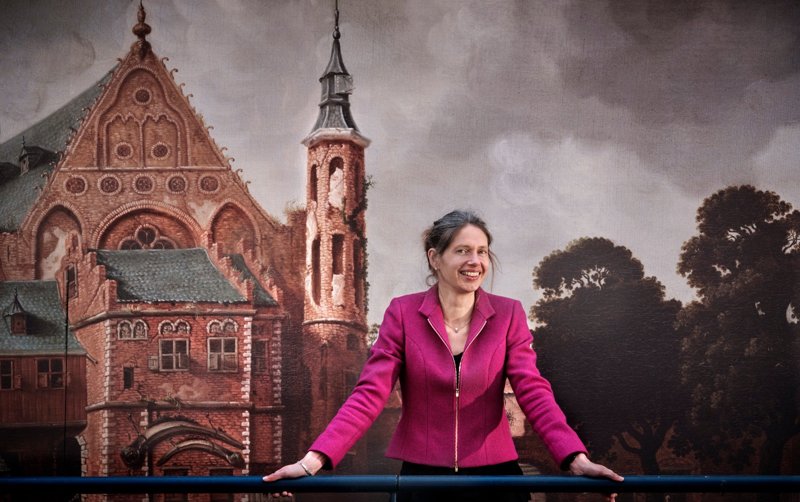Netspar director Marike Knoef strives for more pension knowledge
Drop the word “pension” and Marike Knoef will get genuinely excited. An unusual reaction in a country where most people seem to feel more emotion at the word “brick”. But that enthusiasm is the ideal attitude for Netspar’s general manager, whose mission is to convince the nation that retirement is definitely not a “we’ll think about it later” thing. More retirement literacy is what she aims for. “Because more than half of people are worried about their retirement.”
Is saving for later by definition a good idea? It depends, as Marike Knoef (39) discovered when she moved from her parents’ house in Lochem, Gelderland, to a student room in Tilburg. When she was clearing out the cupboards, she found a stack of origami sheets. Expensive paper, which she used to love folding into origami animals as a six-year-old. But now it dawned on her that she had saved three quarters of them “for later” and now she realizes that she would have been much better off enjoying them at the time. You can also put too much aside, she concluded. She likes to use those Japanese folding sheets as a metaphor when talking about retirement. She also did this in her inaugural speech when she was appointed as professor of empirical microeconomics. She also helped people visualize the differences between pension incomes by handing out a smaller or larger origami paper to everyone present.
Netspar
The key question for her, however, is: how do you distribute your financial resources in such a way that you benefit from them in all phases of life? “That is a challenging question. And one in which various scientific disciplines come together. There are the financial, economic and psychological sides, the work and health aspects - how long can you work? - and the communication about it also plays a role. That’s what makes it so fun and interesting for me.” Which is why she feels like a fish in water at Netspar, an independent think tank and research and knowledge network on pensions, of which she has been the general manager since 2020.
As director of Netspar, you are striving for more "pension literacy”. Why is that so important?
“Research done by Netspar shows that most people know very little about pensions. At the same time, over half are very concerned about it. Even so, for a large proportion of them, their pensions are in order. The only thing is, they’re not aware of it. If people gain a little more basic knowledge, you notice that their worries subside. Of course, you don’t need to know everything under the hood. But 40 percent of young people think that there will be no pension for them later. That really is a lot! If they knew a bit more about it, they could feel more at ease.”
But how do you get them interested?
“We also do research on that. How do you activate people, how do you improve communication? On the one hand, you want to reduce the worries that many people have. On the other hand, you want to inform them about their situation personally. We ourselves communicate little with 'the public'. Once in a while we hold a public event for all Dutch people, for example around the elections. And occasionally we organize information events for interest groups. With our research, we ensure that a debate can be held based on facts, rather than on 'gut feelings’. That is why it is important that our stakeholders - all the agencies involved in pensions - receive the information.”

